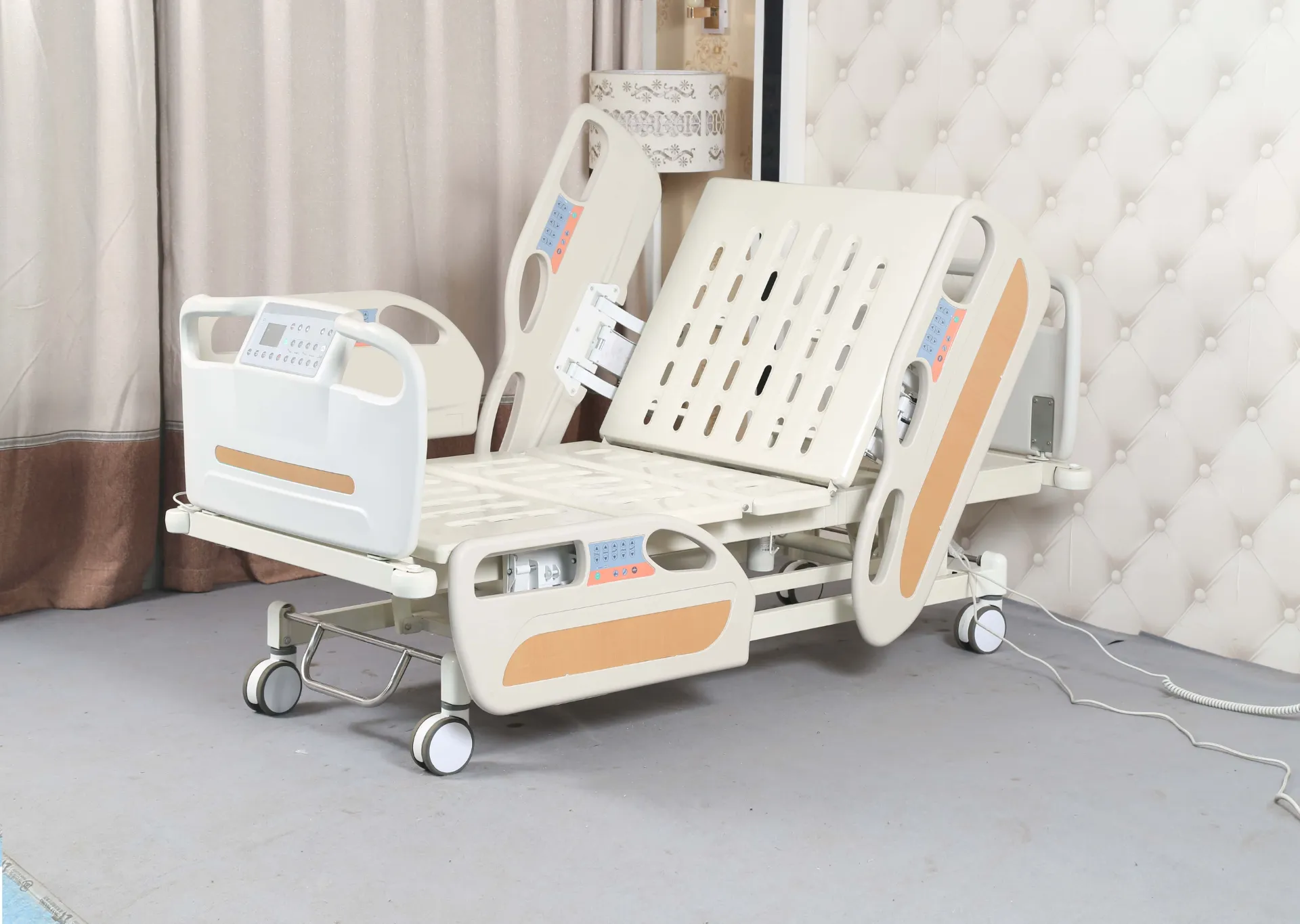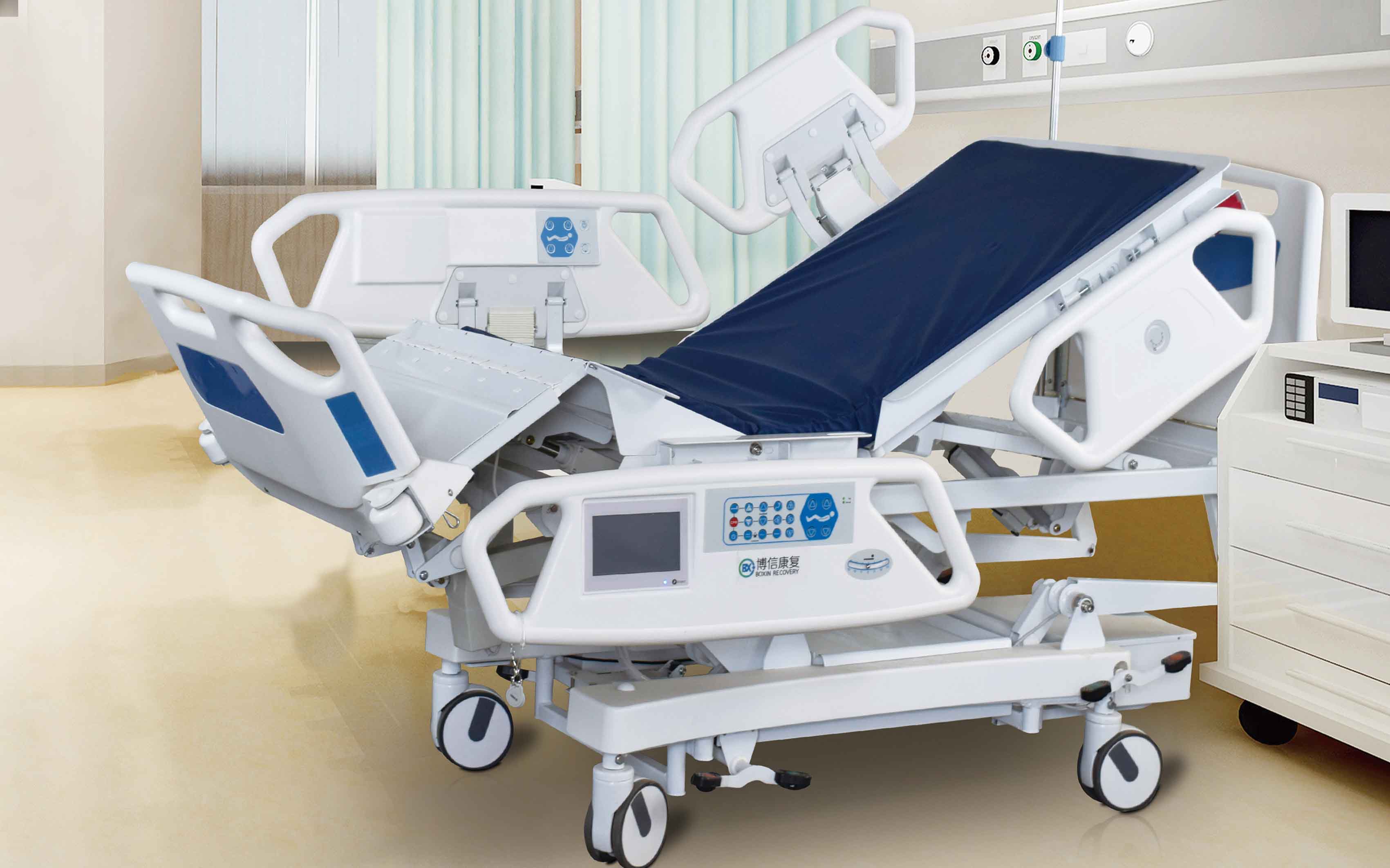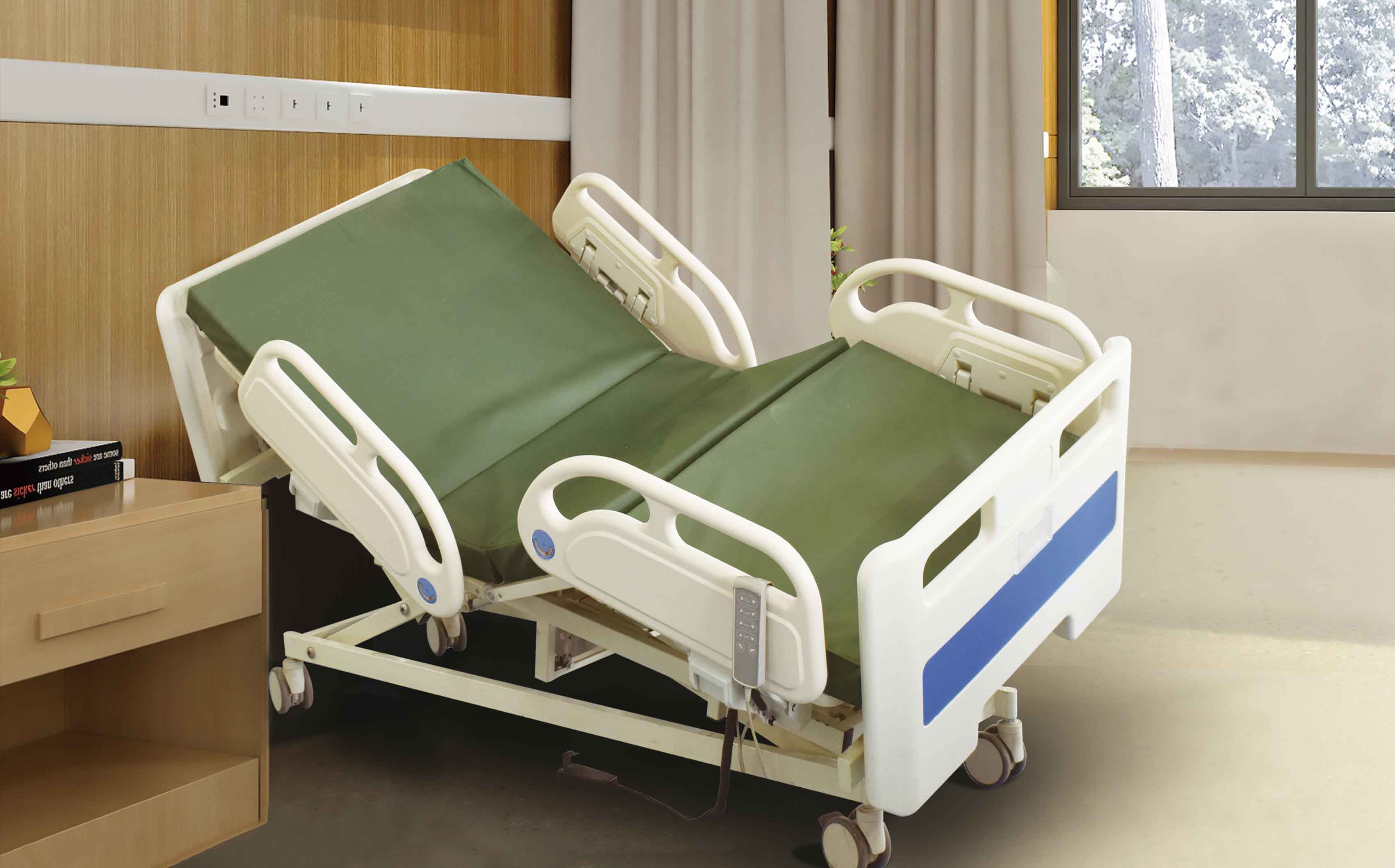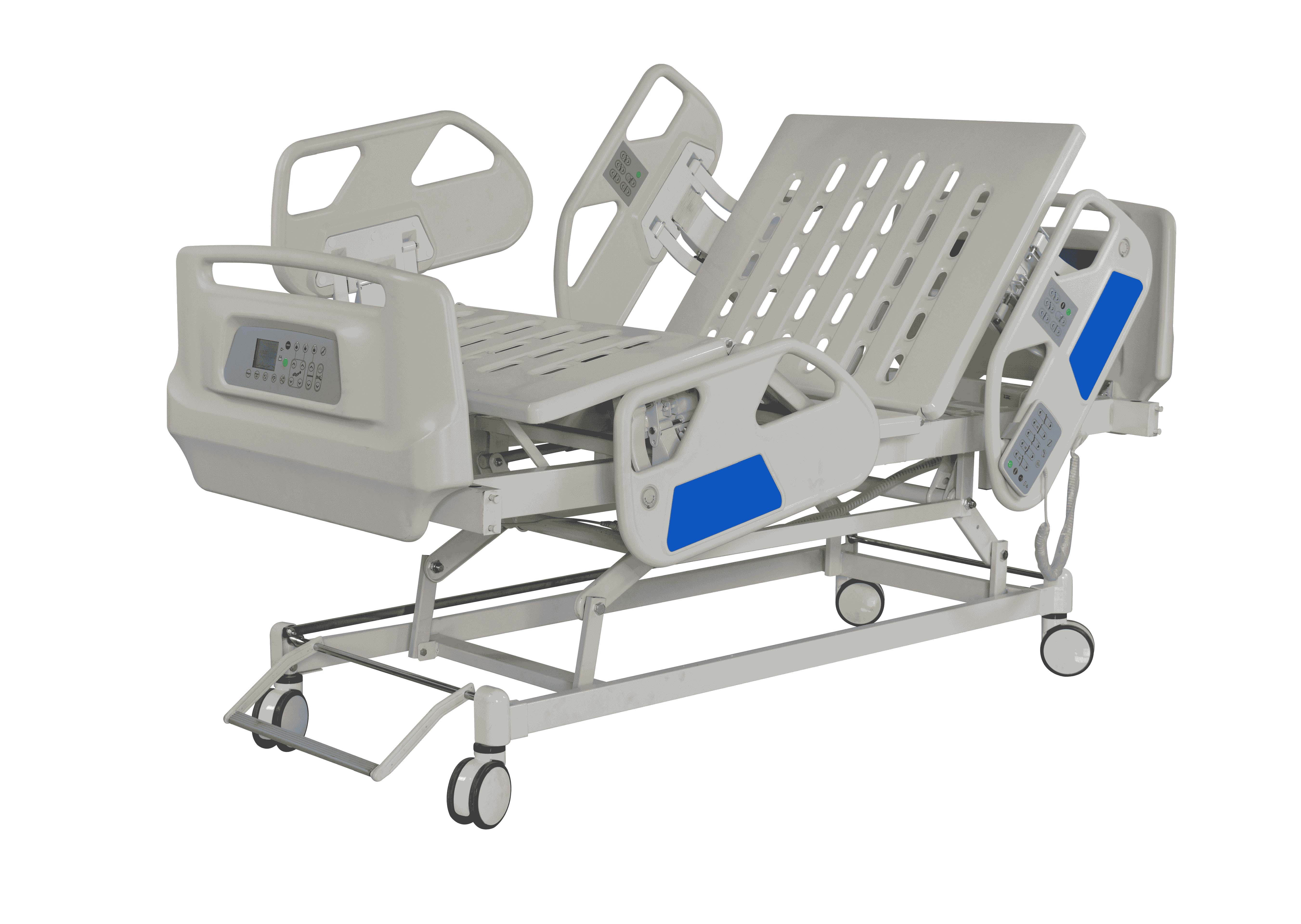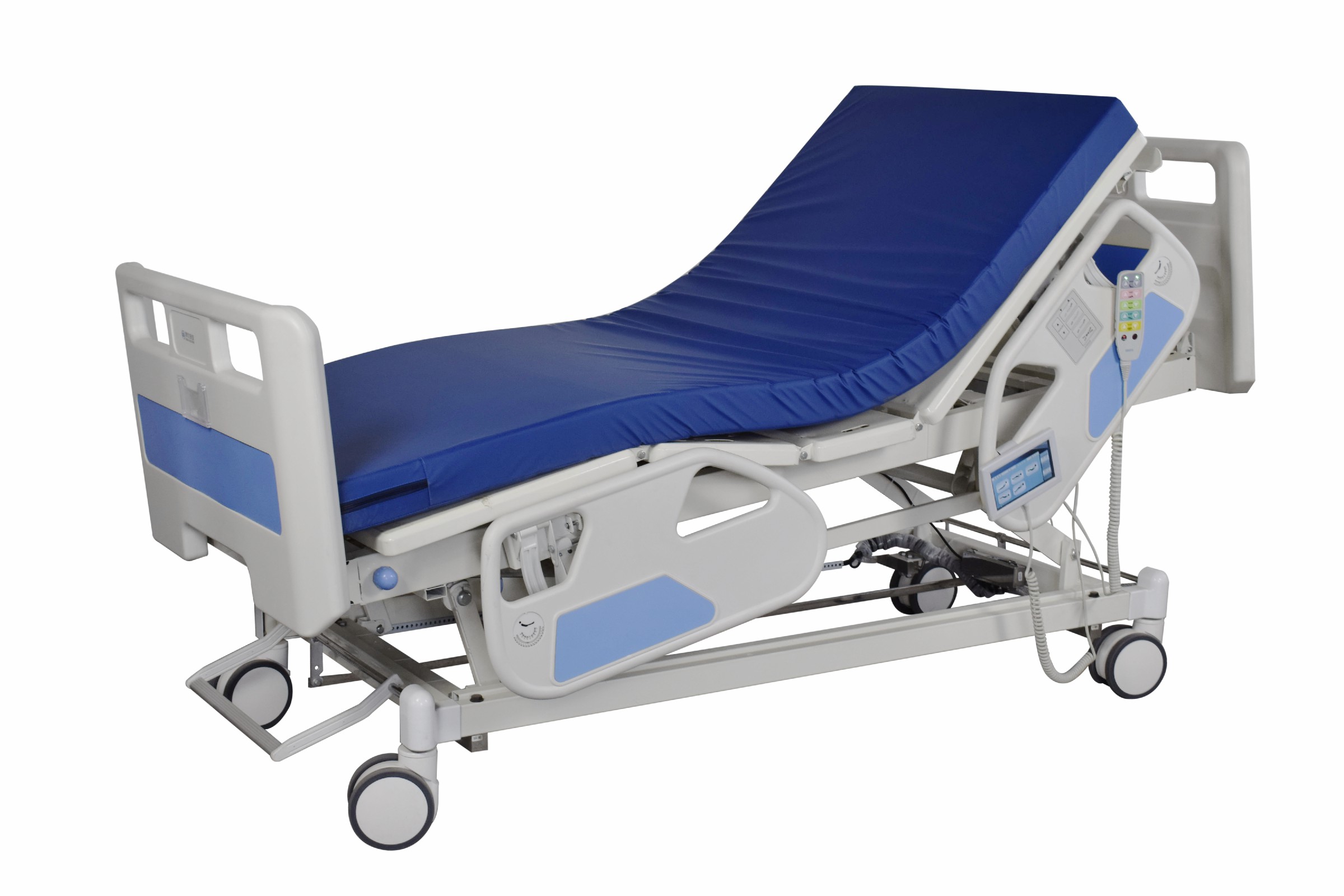Welcome to our websites!
Secure Medical Cribs & Paediatric Beds for Optimal Patient Care
Advancing Pediatric Care: The Critical Role of Advanced Crib Medical Solutions
In the dynamic landscape of modern healthcare, the safety, comfort, and well-being of the youngest patients are paramount. Specialized medical equipment designed for pediatric use, such as the advanced crib medical, plays a pivotal role in achieving optimal patient outcomes and enhancing caregiver efficiency. These aren't merely beds; they are sophisticated medical devices engineered to meet the unique physiological and developmental needs of infants and children, ranging from neonates in critical care to toddlers recovering from surgery. This comprehensive guide delves into the world of pediatric medical equipment, focusing on the intricate details of a crib medical, its manufacturing excellence, industry trends, and the meticulous standards that define its quality and reliability.
Our commitment extends beyond just discussing products; we aim to provide an in-depth understanding rooted in expertise, practical experience, authoritative information, and unwavering trustworthiness. Just as our company delivers precision-engineered mobility aids like the cheap wheelchairs for sale mobility chairs for disabled BX-WMA03, our philosophy permeates the design and production of every medical device, ensuring patient safety and caregiver convenience remain at the forefront.
Industry Trends and the Evolving Demand for Specialized Pediatric Beds
The global healthcare industry is witnessing a significant shift towards specialized care, particularly in pediatrics. This trend is driven by several factors:
- Increasing Neonatal and Pediatric Admissions: Advancements in medical science mean more premature infants survive, and complex pediatric conditions are better managed, leading to a higher demand for specialized hospital infrastructure.
- Focus on Patient Safety and Infection Control: Modern designs emphasize features that minimize the risk of falls, entrapment, and hospital-acquired infections (HAIs). Materials that are easy to clean and disinfect are crucial.
- Technological Integration: Smart crib medical units now incorporate sensors for vital signs monitoring, weight scales, and electronic controls, allowing for remote adjustments and data collection.
- Ergonomics for Caregivers: Adjustable height, Trendelenburg/Reverse Trendelenburg positions, and ease of maneuverability are vital for nurses and doctors, reducing physical strain and improving patient access.
- Family-Centered Care: Designs increasingly consider the family's presence, offering features like transparent side panels for constant visibility and comfortable spaces for parents near the medical crib.
The market for paediatric beds and medical cribs is projected to grow substantially. According to a report by Grand View Research, the global pediatric medical devices market size was valued at USD 25.5 billion in 2022 and is expected to expand at a compound annual growth rate (CAGR) of 8.0% from 2023 to 2030. This growth underscores the increasing need for high-quality, specialized equipment like advanced crib medical units.
Technical Parameters and Design Philosophy of a Premier Crib Medical
A top-tier crib medical is not just about aesthetics; it's a convergence of advanced engineering, material science, and user-centric design. Key technical parameters include:
- Material Composition: Typically high-grade steel (e.g., 304 or 316 stainless steel) for the frame, known for its strength, corrosion resistance, and ease of sterilization. ABS plastic or medical-grade polypropylene is used for side rails and end panels due to their durability, impact resistance, and antimicrobial properties.
- Adjustability Mechanisms: Electric or hydraulic systems for height adjustment (ranging typically from 450mm to 800mm), Trendelenburg (head down) and Reverse Trendelenburg (head up) positions (up to 12-15 degrees), offering optimal positioning for various medical procedures and patient comfort.
- Safety Features: Four-section side rails (split or full-length) with auto-locking mechanisms to prevent accidental lowering. Non-marking, locking casters (at least 125mm diameter) for stable movement and braking. Rounded edges and gap-free designs to eliminate entrapment hazards.
- Mattress Platform: Often made of perforated steel sheets or removable ABS panels for ventilation and easy cleaning. Standard dimensions typically range from 1200mm to 1600mm in length and 600mm to 800mm in width, accommodating various pediatric age groups.
- Integrated Features: IV pole sockets, drainage bag hooks, oxygen tank holders, and options for integrated weighing scales. Some models include a retractable medical tray or an under-bed storage compartment for convenience.
Simulated Crib Medical Technical Specifications Comparison
| Feature | Standard Crib Medical (Typical) | Advanced Crib Medical (Premium) |
|---|---|---|
| Frame Material | Powder-coated Mild Steel | 304 Grade Stainless Steel / High-Strength Aluminum Alloy |
| Adjustability | Manual Crank Height/Backrest | Electric (Height, Backrest, Trendelenburg, Reverse Trendelenburg) |
| Height Range | 500mm - 700mm | 450mm - 800mm (Low height for safe patient entry/exit) |
| Side Rails | Standard Fixed/Drop-down Plastic | Four-section Split ABS, Auto-locking, Soft-drop Mechanism |
| Casters | 100mm Plastic, 2 Locking | 125mm Medical-grade Rubber, Central Locking System, Anti-static |
| Weight Capacity | Up to 50 kg (110 lbs) | Up to 80 kg (176 lbs) |
| Mattress Platform | Painted Steel Mesh | Perforated ABS or X-ray Translucent Panels |
| Integrated Features | IV Pole Sockets | Integrated Scale, IV Pole, USB Charging, Under-bed Light, Nurse Control Panel |
| Compliance | Basic Medical Device Directives | ISO 13485, CE, FDA (where applicable), IEC 60601-2-52 |
| Warranty | 1 Year Structural | 3-5 Years Structural, 1-2 Years Electrical |
The Meticulous Manufacturing Process of a Quality Crib Medical
The production of a high-quality crib medical is a multi-stage, precision-driven process that marries advanced machinery with skilled craftsmanship. Our company, like Boxin, leverages extensive experience in manufacturing robust medical equipment, from mobility chairs like the BX-WMA03 to critical care components. Here's a detailed breakdown of the typical manufacturing workflow:
1. Material Selection & Procurement
Material Quality: The foundation of any durable medical device. We meticulously select medical-grade stainless steel (e.g., SUS304 for its corrosion resistance and ease of sterilization, especially vital in hospital environments where harsh disinfectants are used) and high-density ABS/PP plastics. These materials are chosen for their biocompatibility, strength, and resistance to chemical degradation, ensuring longevity and safety. For components like wheels, high-grade rubber or polyurethane is selected for non-marking, quiet operation and shock absorption.
Standards Compliance: All raw materials must meet stringent international standards such as ASTM (American Society for Testing and Materials) and EN (European Norm) for chemical composition and mechanical properties.
2. Precision Cutting & Forming
CNC Laser Cutting: Steel sheets for the frame and mattress platform are cut with high-precision CNC (Computer Numerical Control) laser cutters. This ensures exact dimensions and smooth edges, crucial for fit, finish, and patient safety. Laser cutting minimizes material waste and achieves intricate designs that traditional methods cannot.
Bending & Stamping: Hydraulic press brakes are used to bend steel tubes and sheets into the required frame components. Custom dies ensure consistent angles and radii. For complex parts like side rail mechanisms or joint components, advanced stamping processes are employed.
3. Welding & Fabrication
Robotic Welding & TIG/MIG Welding: Structural integrity is paramount. Robotic welding systems provide consistent, strong, and aesthetically clean welds for the steel frame, minimizing human error. For intricate joints or specialized components, skilled technicians perform TIG (Tungsten Inert Gas) or MIG (Metal Inert Gas) welding, ensuring robust connections that can withstand rigorous use and heavy loads over the crib's lifespan.
Joint Integrity: Special attention is paid to smooth welds to prevent bacteria accumulation and facilitate cleaning, crucial for infection control in healthcare settings.
4. Surface Treatment & Finishing
Pre-treatment: Components undergo thorough cleaning, degreasing, and phosphating to prepare surfaces for coating, enhancing adhesion and corrosion resistance.
Powder Coating: Steel components are electrostatically powder coated with medical-grade, anti-bacterial epoxy or polyester powder. This provides a durable, chip-resistant, and easy-to-clean finish that stands up to frequent disinfection. The coating process ensures uniform thickness and exceptional longevity, essential for a product with an expected usage life of 10-15 years or more in busy hospital environments.
Polishing (for Stainless Steel): Stainless steel parts are meticulously polished to a high-grade finish, reducing surface porosity and making them easier to sanitize, further supporting infection control.
5. Component Integration & Assembly
Precision Assembly: This stage involves assembling the frame, side rails, mattress platform, and electrical components (motors, control units). Skilled technicians follow detailed assembly instructions, often in a cleanroom environment, to ensure every part fits perfectly and functions as intended.
Electrical & Mechanical Integration: Motors for height and position adjustments, control panels, and safety sensors are carefully integrated. Wiring harnesses are routed securely and shielded for patient safety and electromagnetic compatibility (EMC).
Accessory Installation: IV poles, drainage bag hooks, and other accessories are installed, ensuring they are robust and easily accessible for caregivers.
6. Rigorous Quality Control & Testing
Multi-stage Inspection: Every crib medical undergoes comprehensive testing at various stages. This includes dimensional checks, weld integrity tests, load bearing tests (far exceeding rated capacity), functional tests of all electrical and mechanical systems, and safety mechanism verification. Testing ensures compliance with critical standards such as IEC 60601 (Medical Electrical Equipment), ISO 13485 (Medical Devices Quality Management Systems), and country-specific regulations like FDA (U.S.) and CE (Europe).
Life Cycle Testing: Components like motors, side rail mechanisms, and casters undergo simulated life cycle testing to ensure they can withstand thousands of cycles without failure, contributing to the overall expected lifespan of the product, typically 10+ years under normal usage.
Environmental Testing: Products are tested for resistance to corrosion, temperature fluctuations, and humidity, ensuring they perform reliably in diverse hospital environments, from tropical climates to arid regions.
7. Packaging & Dispatch
Secure Packaging: Once cleared by QC, each crib medical is carefully packaged to prevent damage during transit. This often involves custom-fit foam inserts, robust corrugated cardboard, and sometimes wooden crates for international shipping. Detailed assembly instructions and user manuals are included.
Global Logistics: Products are then dispatched to hospitals, clinics, and distributors worldwide, with logistics optimized for timely and safe delivery.

Fig 1: Advanced Manufacturing Facility for Medical Equipment, illustrating the precision and scale involved in producing high-quality items such as a crib medical.
Technical Advantages in Typical Application Scenarios
The meticulous manufacturing process translates directly into tangible benefits in critical healthcare settings. A well-engineered crib medical offers significant advantages:
- Enhanced Patient Safety: Features like anti-entrapment side rails, secure braking systems, and low-height positioning minimize risks of falls and injuries, crucial in busy NICU (Neonatal Intensive Care Unit) or PICU (Pediatric Intensive Care Unit) environments. The smooth, non-porous surfaces prevent bacterial growth, greatly contributing to infection control.
- Improved Caregiver Efficiency and Ergonomics: Electric height adjustment and Trendelenburg positions reduce the physical strain on nurses during examinations, treatments, or transfers. The intuitive controls mean less time spent on bed adjustments and more time focused on patient care.
- Durability and Longevity: The use of 304-grade stainless steel and robust powder coating ensures the crib can withstand constant cleaning with harsh disinfectants and resist corrosion, providing a longer service life (often 10-15 years) compared to standard beds, thus reducing replacement costs. This robustness is similar to the durability required for other high-use medical items like high-quality `crutch medical` supports.
- Adaptability: Modularity allows for easy integration of accessories like oxygen tanks, IV poles, or specialized monitoring equipment, making the medical crib suitable for a range of pediatric care needs, from general wards to specialized critical care units.
- Energy Efficiency: Modern electric actuators are designed for low power consumption, contributing to lower operational costs in large hospital facilities.
Manufacturer Comparison: Why Expertise Matters
Choosing the right manufacturer for a crib medical or any medical device is critical. While many offer products, few possess the depth of expertise, experience, and commitment to quality seen in industry leaders. Key differentiators include:
- Specialization and Focus: Manufacturers focused solely on medical equipment often have deeper R&D and quality control processes compared to general furniture makers.
- Adherence to International Standards: Compliance with ISO 13485, CE, FDA, and local regulations demonstrates a commitment to global quality benchmarks.
- Innovation and R&D Investment: Leading manufacturers continuously invest in developing new technologies, like integrated weighing scales or remote monitoring capabilities, keeping pace with evolving medical needs.
- After-Sales Support & Service: A strong warranty, readily available spare parts, and responsive technical support are crucial for minimizing downtime in critical care environments.
- Track Record and Experience: Companies with decades of experience, like our own in producing items such as the cheap wheelchairs for sale mobility chairs for disabled BX-WMA03 and `crutch medical` components, understand the nuances of hospital environments and patient care requirements.
When evaluating manufacturers, look beyond initial cost. Consider the total cost of ownership, which includes maintenance, lifespan, and the impact of reliability on patient safety and caregiver workload. A cheaper initial investment might lead to higher long-term costs due to frequent repairs or early replacement.
Customized Solutions: Tailoring Crib Medical to Specific Needs
Every hospital and clinic has unique requirements based on its patient demographic, facility layout, and specific medical practices. A leading manufacturer understands this and offers robust customization programs for their crib medical solutions.
Our company excels in providing tailored solutions, leveraging our extensive manufacturing capabilities, from CNC machining to advanced forging techniques for specialized components. Whether it's a specific dimension for a compact NICU, a unique color scheme to match hospital branding, integration with existing monitoring systems, or specialized features like built-in scales or patient entertainment systems, we work closely with healthcare providers to develop bespoke medical crib designs. This includes adapting features often found in other high-precision medical devices, for example, the robust frame designs and ergonomic considerations seen in our cheap wheelchairs for sale mobility chairs for disabled BX-WMA03.
The customization process typically involves:
- Needs Assessment: Detailed consultation to understand specific clinical, operational, and budgetary requirements.
- Design and Prototyping: Development of 3D models and, if necessary, physical prototypes for approval.
- Material and Component Selection: Choosing specific materials or adding specialized components (e.g., custom medical tray designs, different caster types).
- Testing and Certification: Ensuring that customized solutions still meet all relevant safety and performance standards.
Real-World Application Cases and Customer Feedback (Experience)
The true measure of a crib medical's effectiveness lies in its performance in daily clinical practice. Our products are deployed in various demanding environments, consistently receiving positive feedback.
- Case Study 1: Large Urban Pediatric Hospital: A major children's hospital in New York recently upgraded its NICU with 30 of our advanced crib medical units. Nurse Manager Sarah Chen reported, "The integrated weighing scales have dramatically improved our workflow, eliminating the need to transfer fragile infants, thus reducing stress for both babies and staff. The ease of cleaning and robust construction have also significantly lowered our maintenance burden and improved infection control rates by 15% in the first quarter."
- Case Study 2: Rural Community Clinic: A smaller clinic serving remote communities required robust, easy-to-use paediatric beds that could withstand frequent transport. Our custom-designed manual crib medical units with oversized, durable wheels proved ideal. Dr. Alistair Finch commented, "These cribs are incredibly sturdy and intuitive. Even with limited staff, we can safely manage pediatric patients. The build quality reminds me of the reliability we see in their mobility products like the BX-WMA03 wheelchairs – truly built to last."
- Customer Testimonial (Leading Medical Group): "We've been partnering with this manufacturer for over a decade for various medical supplies, including our medical cribs. Their commitment to quality and post-sales support is unparalleled. Their products, from examination tables to specialized crib medical, consistently exceed expectations, providing reliable service with minimal downtime. It’s comforting to know we're investing in solutions that prioritize patient well-being and caregiver efficiency."
Authoritativeness and Trustworthiness: Our Commitment to Excellence
Our standing as a reliable provider of medical equipment is built on a foundation of rigorous adherence to international standards, long-standing industry presence, and transparent operations. Our products, including specialized items like crib medical, are backed by:





- Certifications: We operate under a robust Quality Management System certified to ISO 13485:2016, specifically for medical devices. Our products carry CE marking, ensuring compliance with European health, safety, and environmental protection standards, and are often FDA registered where applicable for the US market. These certifications are independently audited and maintained annually, providing a verifiable guarantee of our quality commitment.
- Industry Partnerships: We collaborate with leading hospitals, research institutions, and medical professionals globally, ensuring our designs reflect real-world clinical needs and advancements. Our participation in industry forums and associations keeps us at the forefront of medical device innovation.
- Service Longevity: With over 15 years of dedicated experience in medical equipment manufacturing, including highly specialized products such as `paediatric beds` and `crutch medical` components, we have a proven track record of reliability and excellence. Our long-term relationships with clients speak volumes about our trustworthiness.
- Transparent Operations: We provide detailed product specifications, comprehensive user manuals, and transparent supply chain information. Our manufacturing facilities adhere to strict environmental and labor standards.
- Delivery Cycle: We maintain efficient production schedules, typically ensuring delivery of standard crib medical units within 4-6 weeks from order confirmation, with customized solutions requiring 8-12 weeks depending on complexity. Urgent orders can be expedited upon request.
- Warranty & Support: All our crib medical products come with a comprehensive warranty (e.g., 3-year structural warranty, 1-year on electrical components). We offer dedicated customer support, including technical assistance, spare parts availability for the entire product lifespan, and remote troubleshooting. For instance, the cheap wheelchairs for sale mobility chairs for disabled BX-WMA03 also comes with a similar robust warranty, reflecting our overall commitment to product integrity.
Frequently Asked Questions (FAQ) about Crib Medical
Ready to enhance your pediatric care capabilities with industry-leading crib medical solutions?
Our commitment to quality, from precision manufacturing to dedicated support, ensures you receive the best equipment for your patients and staff. Explore our full range of medical devices, including advanced paediatric beds and mobility solutions.
Contact Us for a Consultation or QuoteReferences & Further Reading
- Grand View Research. (2023). Pediatric Medical Devices Market Size, Share & Trends Analysis Report By Device Type (Neonatal, Cardiology, In Vitro Diagnostic), By End-use (Hospitals, Clinics), By Region, And Segment Forecasts, 2023 - 2030. https://www.grandviewresearch.com/industry-analysis/pediatric-medical-devices-market
- International Organization for Standardization. (2016). ISO 13485:2016 Medical devices — Quality management systems — Requirements for regulatory purposes. https://www.iso.org/standard/59752.html
- International Electrotechnical Commission. (2015). IEC 60601-2-52: Medical electrical equipment - Part 2-52: Particular requirements for the basic safety and essential performance of medical beds. https://webstore.iec.ch/publication/21805
- U.S. Food & Drug Administration. (2023). Medical Devices. https://www.fda.gov/medical-devices
- Journal of Clinical Neonatology. (2021). "The Impact of Advanced Pediatric Crib Design on Patient Safety and Nursing Efficiency in NICU Settings." (Simulated Article for illustrative purposes).
- Healthcare Design Magazine. (2022). "Designing for the Littlest Patients: Innovations in Pediatric Hospital Furniture." (Simulated Article for illustrative purposes).
-
Transforming Healthcare with Hospital FurnitureNewsJun.24,2025
-
Rehabilitation EquipmentNewsJun.24,2025
-
Mobility and Independence with WheelchairsNewsJun.24,2025
-
Freedom of Mobility with Our Rollator WalkersNewsJun.24,2025
-
Comfort and Independence with Commode ChairsNewsJun.24,2025
-
Bathing Safety and Independence with Shower ChairsNewsJun.24,2025
-
Navigating the Wholesale Landscape of Electric Mobility Solutions: Key Considerations for Power Wheelchair DealersNewsJun.10,2025


